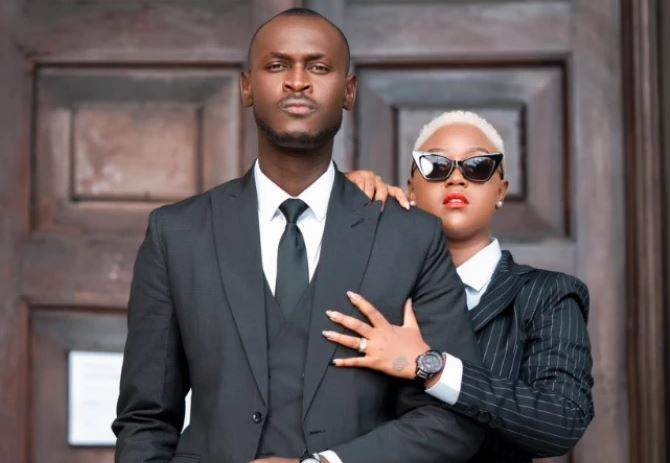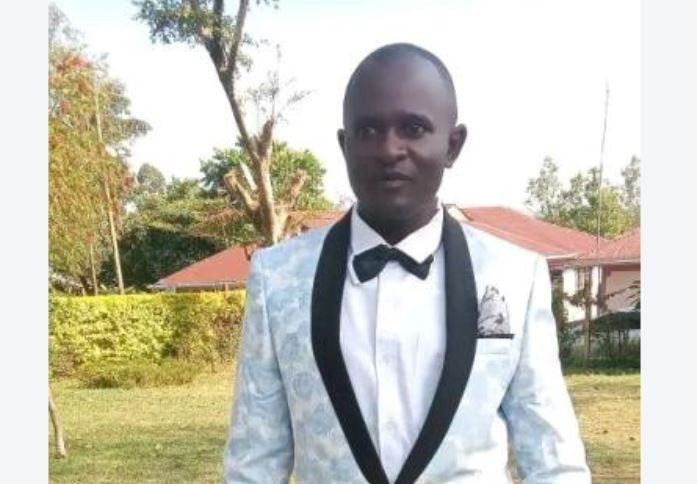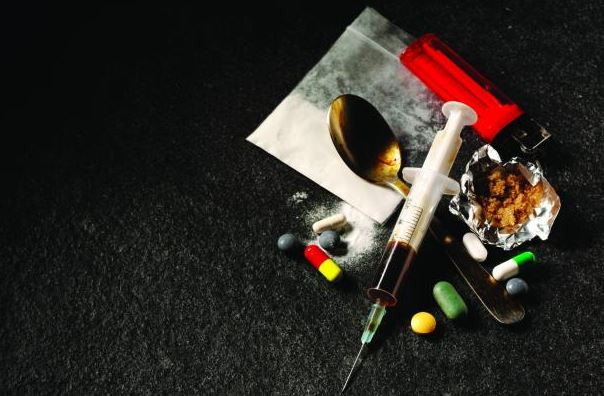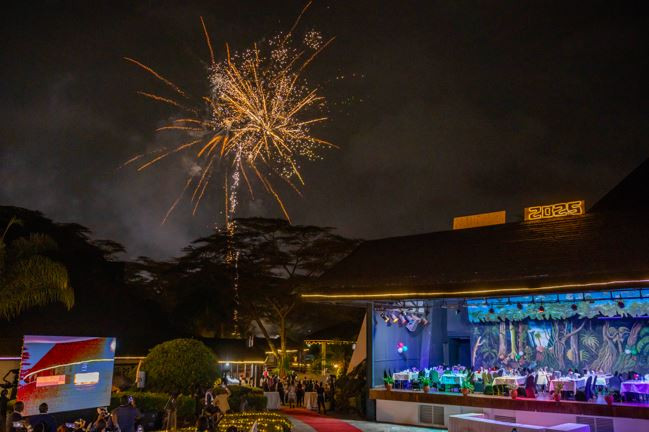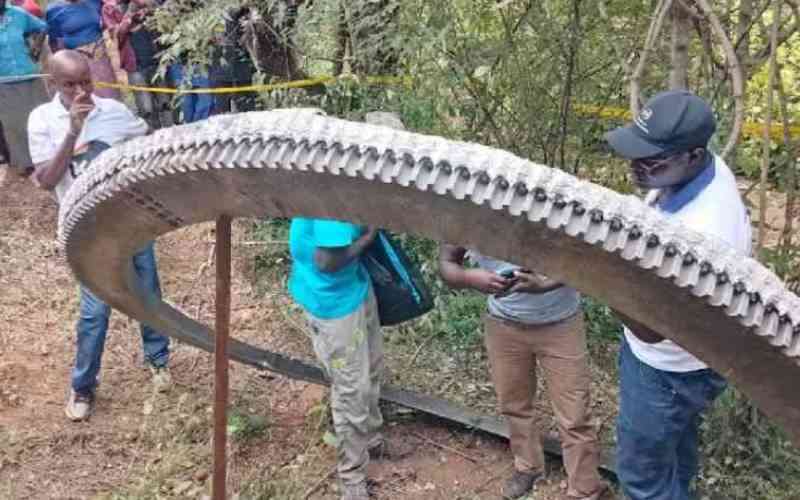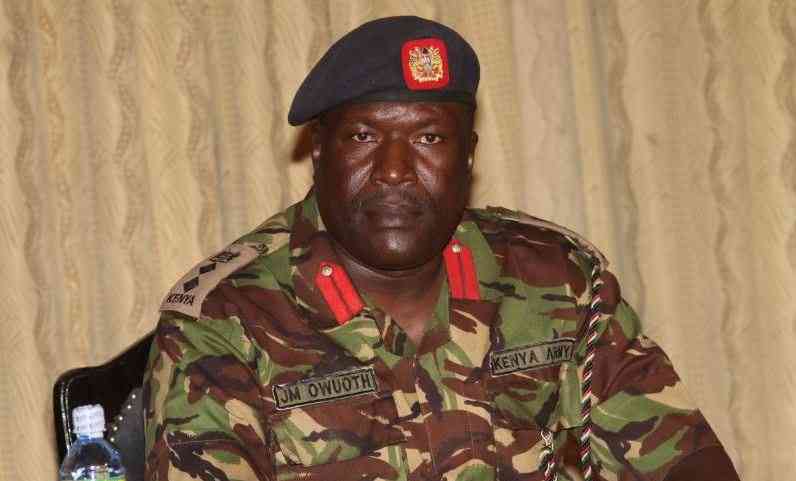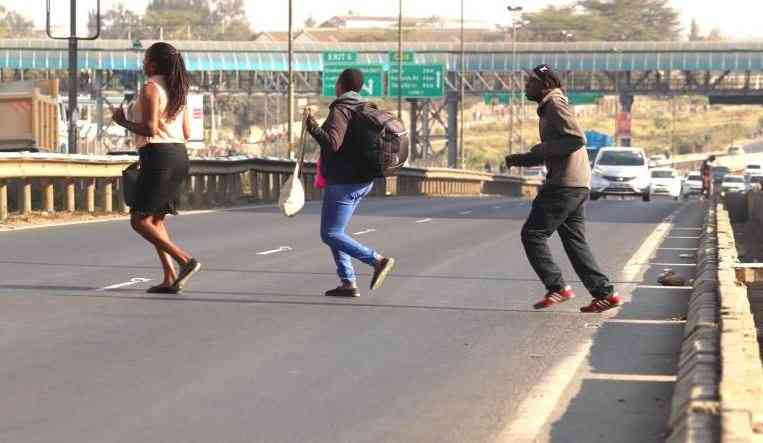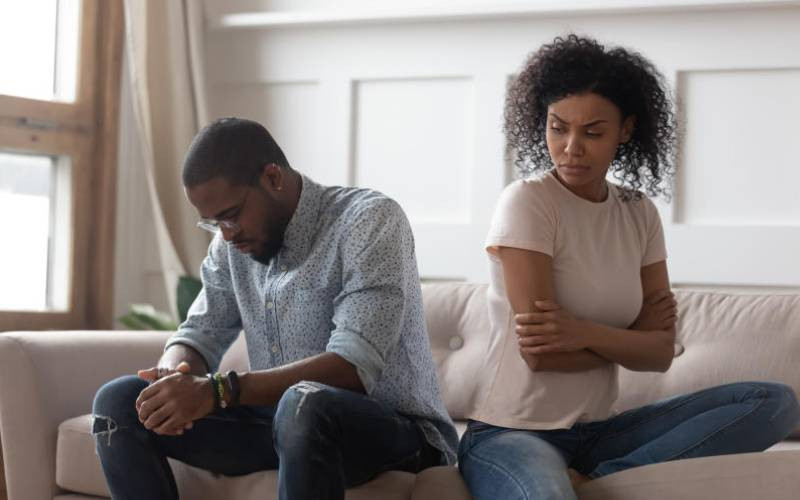
Shafts of light from the horizon streak across the ancient Arabic architectural marvels lining the streets of Mombasa, their grandeur extending beyond the iconic Fort Jesus.
Along the backstreets, men of all races, dressed in kanzus rolled to the hips, some brashly bare-chested or in vests and shorts, sit on wooden benches sipping coffee with snacks from trays.
From the mosques, the adhans by the muezzins (callers to prayer), summoning Muslims for the mandatory Friday Maghrib prayers, resonate from minarets mounted on rooftops.
Parishioners from the Catholic Holy Ghost Cathedral and ACK Memorial Cathedral, located just 100 metres apart along Nkrumah Road, spill into the streets after their 5pm praise and worship sessions.
Meanwhile, the chorus of “So mote it be” (So be it) emerges from the Masonic Temple behind the Catholic church on Nyerere Avenue, while chants of ‘Aum’ echo from the Hindu temples along Haile Selassie Avenue. This kaleidoscope of faiths reflects the city’s cultural and spiritual diversity, all striving to nourish its troubled soul.
As Friday evening unfolds, partygoers queue outside the few remaining clubs along Moi Avenue, hoping to grab a drink or two. Clubbing tourism in the city centre has suffered greatly due to insecurity, piracy, and shifting lifestyles, eroding the thriving cruise ship tourism that defined Mombasa in the late 1990s and early 2000s.
The decline of clubbing tourism has led to the rise of colleges and gyms occupying buildings across the streets, sustaining the rental sector, which has also felt the pinch of insecurity and state policies regarding Mombasa Port. These policies have forced many logistics firms to relocate to Nairobi.
In areas, such as Bamburi, Nyali, Likoni, and Bombolulu, bare-chested men push carts laden with jerrycans of water through traffic to deliver to customers. Tuk-tuks and bodabodas dart past matatus, all vying for clients. At Mama Ngina Waterfront, traders sell fried cassavas and viazi karai in a desperate bid to earn an extra shilling.
- More varsity students smoking bhang, Nacada
- Western region beats Central in alcohol abuse
Keep Reading
The bustling life and the smiles of the friendly Coast people might deceive visitors into thinking all is well. In reality, Mombasa’s story is layered with diverse and often conflicting religious, cultural, economic, and social struggles.
Shadow of crime and gangs
Mombasa’s streets have witnessed bloody episodes attributed to the Al Shabaab terror network and its offshoots, which carried out attacks from 2002 to 2017, claiming lives and spreading fear.
In between the terror attacks in Mwembe Tayari, Bondeni, and Bella Vista along Moi Avenue and suburbs, such as Likoni, Kisauni, and Nyali, there emerged knife-wielding juvenile gangs still wreaking havoc in most parts, such as Mombasa’s Likoni, Kwale’s Diani and Kilifi’s Mtwapa areas.
Security analysts differ on what fueled these gangs in the streets and villages of Mombasa, Kwale, Kilifi, Tana River, Lamu, and TaitaTaveta. Some claim it is increased narcotic trade on the coast, while others link it to politics. Those of the political view allege that the juvenile gangs were orphans of politics; used by politicians in the country’s five-year political campaign circles then left out to dry.
Still, the third school of thought claims the gangs were a result of economic struggles, lack of employment opportunities, school dropouts, and alleged marginalisation of the Coastal people.
Data from security agencies indicate that at least 300 knife-wielding gangs have terrorised Mombasa residents since 2016. They brazenly killed, maimed, and robbed, day and night.
These juvenile gangs, which former Principal Secretary Prof Hamadi Boga christened in the past, “Wolf Packs”, started as boys scrambling for food at night weddings or parties before they got emboldened to conduct night and sometimes daylight robberies.
Like actual wolves, they would wait patiently from the fringes of weddings, but never lose the intensity of observing, following, and planning how to execute an attack on their prey for food. As guests waited for the groom to arrive, these ‘young wolves’ sauntered into the tent to pounce on food prepared for guests. “I attended a wedding at Sawa Sawa. These young boys, between 12 and 16 years old, stormed the wedding. They seemed oblivious to the rituals,” Boga recalled in 2022.
Multiple interviews indicate that the phenomenon started in Mombasa’s Kisauni area in 2014 and engulfed Kwale, Kilifi, Lamu, and Tana River counties by 2022.
Most Swahili and Muslim wedding rituals gradually lost the oomph of the community’s rich culture, with most held under tight security or for invite only in highly guarded hotels.
“The events engulfed the entire coast. These children started to use drugs to be emboldened and later turned into machete-wielding gangs,” said Sheikh Issa Kahind of Mariakani.
In Mombasa, the dreaded Wakali Kwanza was later disintegrated into two, forming another one called Wakali Wao. The two groups disintegrated further to establish their turf.
The two gangs were commandeered by Dula alias ‘Captian J’, whose name strikes terror in the heart of residents along the Old Malindi road in Kisauni. Dula gangs started as football teams in Kisauni.
Dula’s ardent legion of militants launched horror, such as the 2019 three-hour rampage when they roamed freely, slashing helpless locals, looting, and pillaging from about 8pm.
Days after the rampage, police killed Dula, ending his four-year reign, which he seized from the first leader, Mohamed Bakari, who a mob killed at Mwandoni, Kisauni in what police said was gang wars.
Kisauni and Nyali offshoots, such as Gaza, Akili za Usiku, 64, Memory, Vietnam, Watalia, Young Turks, Born to Kill and Kapenguria Six juvenile gangs emerged. In Likoni, Wajukuu wa Bibi, Young Turks, Boko Haramu, Chasu za Docks and Wajukuu wa Nyanya, Gaza, Spanish, Kapenguria Six.
Other cells were Wakali Kweli in Bamburi, Wakali Che of Bombolulu, and Wakali Pesa on Matatu terminus, operated independently, but joined forces whenever one faced an existential threat.
Likoni Sub-County police commander Geoffrey Ruheni said some of the gangs were still terrorising Mombasa residents. He added that some of the criminals are known in the community.
Some of the insecurity hotspots in Likoni are Kona Mtongwe, Café, Kwa Kibaki Estate, Vyemani Ground, Kimbunga, Vyemani Primary, Kwa Msembi, Barabara ya Mchanga, Timboni, Inuka, among others. “I want parents and other stakeholders to start walking with us to every house where known criminals stay not to arrest them or beat them, but to talk to them. These criminals have to be marked in red,” Ruheni said last week in a baraza to discuss the re-emergence of the gangs.
In Kwale, another criminal group, Mombasa Republican Council (MRC) led by Omar Mwamnuadz also emerged a head of the 2012 elections and swept the entire coast with its secession agenda.
Multifaceted problem
Security sources and independent non-state actors are often linked to religious extremism, drug trade, or xenophobic political ideologies, but, importantly, to the economic hardship in Mombasa. “All those arguments are correct. The gang issue is a multifaceted problem. Some are sleeper cells activated during the political campaigns,” said Julius Ogogoh, a human rights activist.
Ogogoh, Executive Director of the Commission for Human Rights and Justice (CHRJ), said economic struggles, drugs, and joblessness also drew most youths to the streets of Mombasa. “Other gangs consist of the radicalised ‘orphans’ of the late Muslim clerics who preached at the Majid Musa and Sakina during the so-called takeover of those mosques,” he said.
Security sources say that legions of the fiery sermons from radicals, such as the late Aboud Rogo and the late Abubakar Shariff alias Makaburi still remain active in parts of the coast.
The fall of Mombasa as an economic giant started much earlier. The tourism sector’s performance between 2002 and 2023 varied depending on the security situation in each country.
It was during these 21-year period that Kenya witnessed Kilifi’s Kikambala bombings in 2002 and botched attempt to shoot down a plane near the International Airport in Mombasa.
Tourism source markets, U.S. and European countries slapped the country with travel bans. Locally, rental prices in Majengo and Kisauni dropped after radicalised youths reigned terror in Mombasa.
Rise of narcotics, radicalisation
The fight was not only ideological. Most towns on the coast were run by drug barons that security agents say were the third-tier followers of the late drug baron Ibrahim Akasha.
The late Bosire Nyaigoti Makori, who controlled the South Coast drug network, reigned terror on his rival across the Coast. Makori, a flamboyant drug dealer who drove flashy cars, was arrested multiple times with heroin and cocaine. He was gunned down in December 2021 in the Diani area.
Makori’s close associate, Swaleh Yusuf Ahmed alias Kandereni, and his wife, Fatuma, who operated from the North Coast, reportedly supplied Kisauni and Nyali areas with narcotics.
Ahmed alias Candy Rain, a heavily built, six foot, dark-skinned, rough bearded man, rose from being a matatu driver plying the Kisauni and Bamburi route to a feared drug baron.
He was found dead in March 2024 at Kiruwitu near Vipingo in Kilifi after 28-year run-ins with law enforcement agencies. Police said a rival drug gang killed him. Ahmed’s wife was in November 2014 jailed for 40 years for drug trafficking.
The United Nations Office on Drugs and Crime (UNOD) puts 10,000 people who inject heroin every day in Mombasa. It puts the national figure at 18,000 people. These figures are tales of youths turned into zombies in the streets of Mombasa or rotting in jail.
At the sea, pirates turned Somali waters hell for ships, especially the cruise ships that brought in American, UK, and Indian soldiers and other tourists that support the clubbing tourism segment.
“The death of the cruise ship business because of piracy and insecurity was a colossal blow to coast tourism. We must revive it because a no-tourism city thrives without entertainment or clubbing tourism,” said Victor Shitakah, a veteran Kenyan hotelier and a Lead Consultant and Director at Shitakha & Shitakha Consultancy.
There were no cruise ship arrivals in Kenya from 2005 to 2016, because of the fear of pirate attacks off the Kenyan coast, but now many cruise ships are docking at Mombasa port.
Insecurity in the Indian Ocean saw a drop in cruise ships calling at the port from 15 vessels carrying 12,096 visitors in 2004 to just four vessels, with 508 visitors who arrived in 2010.
“With the construction of the Sh1.4 billion cruise ship terminal at berth 1 of the Port of Mombasa, all we need to do is aggressive marketing. I’m happy Mombasa has established the Mombasa Tourism Council to do so,” said Dr Sam Ikwaye.
Shitaka and Dr Ikwaye agree that it will take at least two years to market Kenya as a safe cruise ship destination for the ships to start calling Mombasa.
Hope for revival
Dr Ikwaye, a seasoned tourism expert, remains optimistic that programmes from the Mombasa Tourism Council (MTC) and Kenya Tourism Board (KTB) would rise again.
Coast fought not to sink until the State introduced the policy of evacuating all containers from the Port to Nairobi through the Standard Gauge Railway (SGR), which came into force.
In 2019, a report by the University of Nairobi’s School of Business showed that between 2017 and early 2019, Mombasa’s economy lost Sh17.4 billion and 2,987 jobs equivalent because of SGR policy.
However, the sorry economic state of Mombasa and the Coast was badly hit by the outbreak of Covid-19 in Kenya in March 2020. At least 13 major tourism hotels closed down as foreign countries evacuated their citizens, condemning thousands of Kenyans to joblessness.
In the recent interview, Sheikh Juma Ngao said the ripple effects of the fall of the tourism sector, radicalization, and narcotics have increased crime in Mombasa, Kwale, and Kilifi and the surge in street families in Mombasa.
 The Standard Group Plc is a multi-media organization with investments in media platforms spanning newspaper print
operations, television, radio broadcasting, digital and online services. The Standard Group is recognized as a
leading multi-media house in Kenya with a key influence in matters of national and international interest.
The Standard Group Plc is a multi-media organization with investments in media platforms spanning newspaper print
operations, television, radio broadcasting, digital and online services. The Standard Group is recognized as a
leading multi-media house in Kenya with a key influence in matters of national and international interest.

